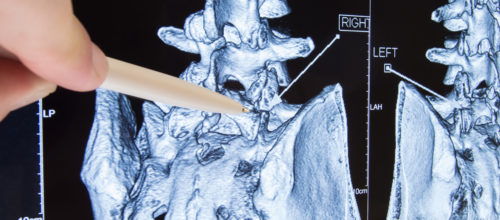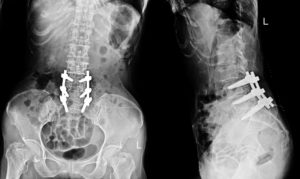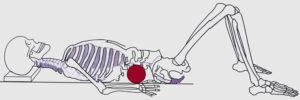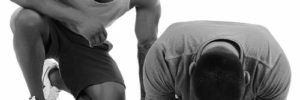
Random Thoughts on Overcoming Low Back Pain – Part 2
Spine biomechanics is one area of research that I admire.
Understanding how a disc bulge develops, or how a loss of disc height alters force fascinates me.
It’s a bit ironic since I never had an appreciation for this field until my back issues (L5-S1 Disc herniation & Facet Joint Osteoarthrosis).
And I know I wouldn’t have been able to recover from my back issues if I didn’t have a comprehensive understanding of spine biomechanics.
Also, I can say that with my knowledge to date regarding back injuries, it’s made me a better coach and it’s allowed me to carve out a unique niche.
When a new client comes to see me with a history of low back issues, whether it’s a disc bulge, retrolisthesis, pars fracture, schmorl’s node, etc., — I have a good idea of what they need to focus on and avoid. For example:
A person with a disc bulge (assuming it’s posterior) “should” avoid lumbar flexion with a compressive force (e.g., sit-ups).
A person with a retrolisthesis is going to have to be careful with lumbar flexion, axial and shear loading (e.g., pallof press).
A person with a pars fracture “should” avoid lumbar extension with a compressive force (e.g., Supermans).
A person with a schmorl’s node needs to be careful with axial loading (e.g., heavy squatting).
Note: Low back issues are created differently and are going to respond differently to various exercises, postures and loads.

In extreme cases, think about how exercise may affect a person’s spine after a surgery that involves placing screws in their low back. Image Licensed from “rattanachot2525@gmail.com/depositphotos.com”
When the spine develops degenerative changes, albeit asymptomatic or symptomatic, you need to understand that forces placed on the spine are going to change. And this could have implications for triggering symptoms and developing new degenerative changes.
A good example is when a person has pain in their tailbone region; yet, after a few weeks, they start feeling a “new” pain at the upper portion of the low back. One explanation for this new symptom is that the original pain (tailbone region) could have been a result of a disc herniation causing hypermobility – resulting in painful micromovements and excessive motion from the facet joints. With time and a lack of adherence to a spine stabilization program, the facet joints may develop osteoarthrosis.
Once the facet joints develop osteoarthrosis, they may lock up and restrict movement causing the adjacent disc/vertebra to make up for this loss of movement. And with time, you may have new degenerative changes at the adjacent disc/vertebra.
In simpler terms – when a disc herniation develops, a portion of the spine becomes disrupted. This disruption means compensation is going to happen somewhere to make-up for the loss of mobility/stability.
That’s why you may hear of a person complain that they have back pain in a new location.
From a back pain person’s perspective, core endurance, and spine stabilization exercises may help. If the cause of the new symptom is a hypermobility issue, then increasing the stability of the injured spine segment may reduce symptoms and prevent future problems from developing. But I would say that if a new symptom did emerge, it would be necessary for the person with low back pain to seek out a specialist that can diagnose the cause of the symptom and the spine segment that is giving them issues.
Multiple factors can cause back pain, and a failure to understand the issue and how it relates to various exercises, postures and loads could lead to a person experiencing a relapse, make the existing problem worse, or perhaps create a new issue.
Remember.
With degenerative changes, spine biomechanics change.
Salute,
Remi
Thumbnail Image Licensed from “Shidlovski/depositphotos.com”











